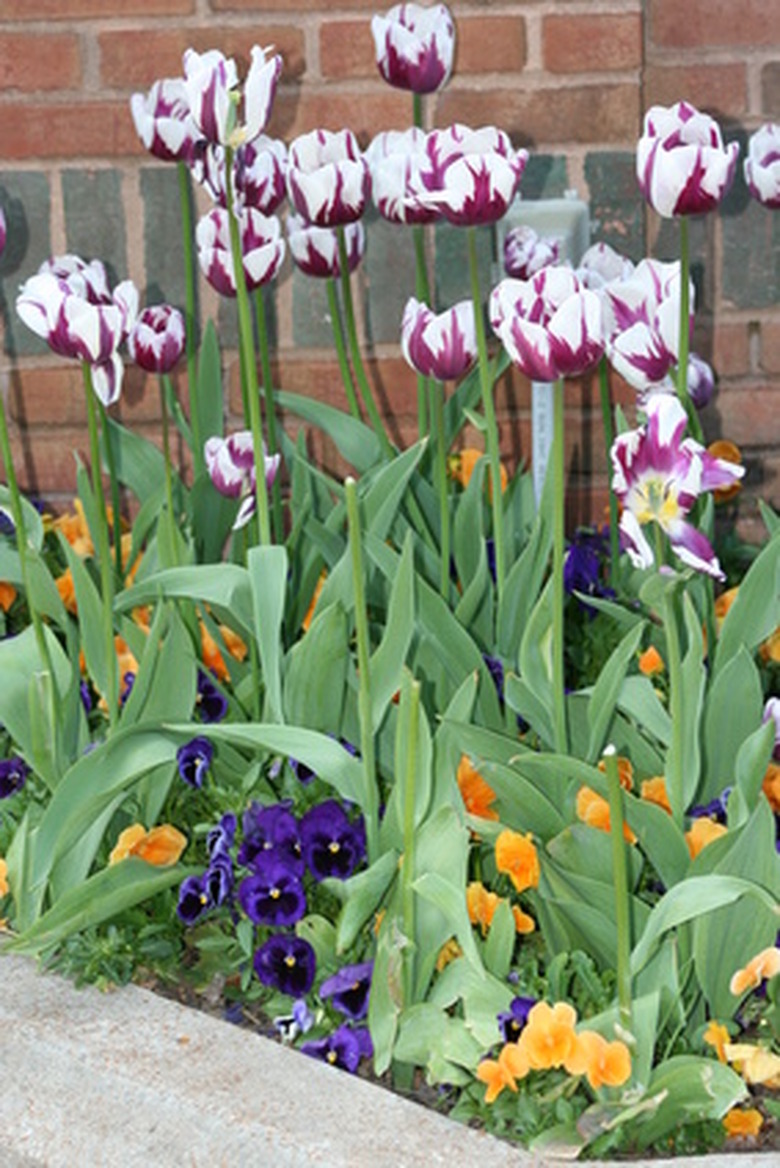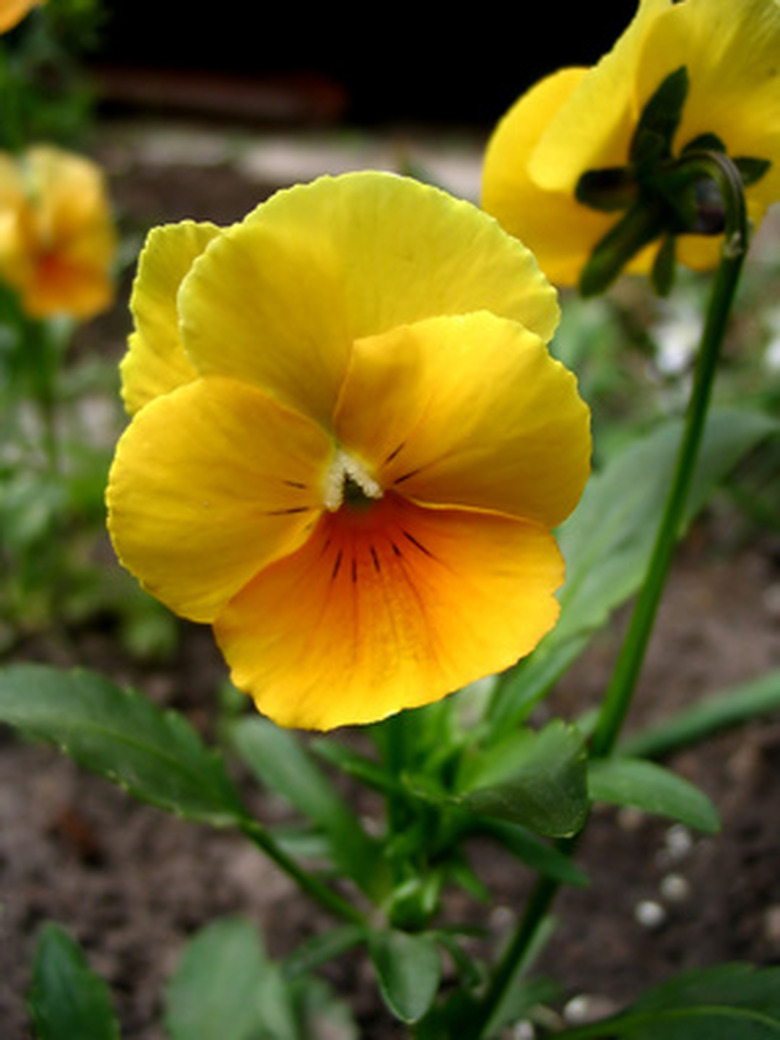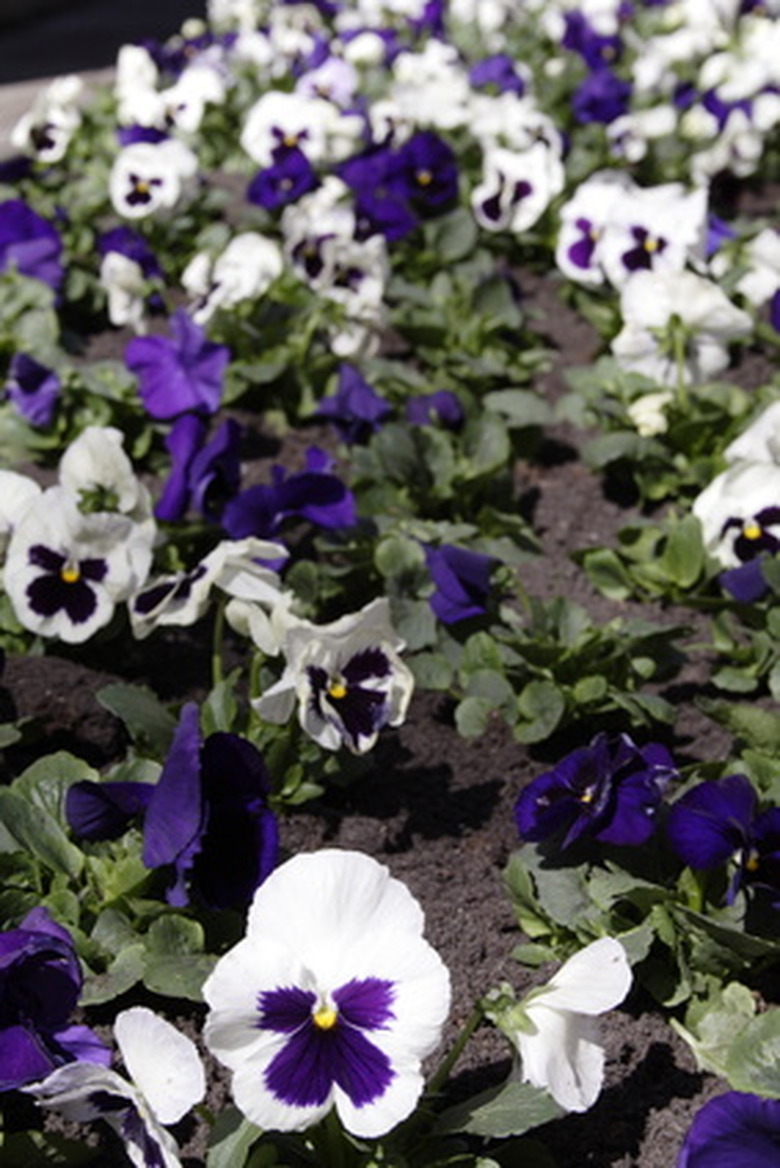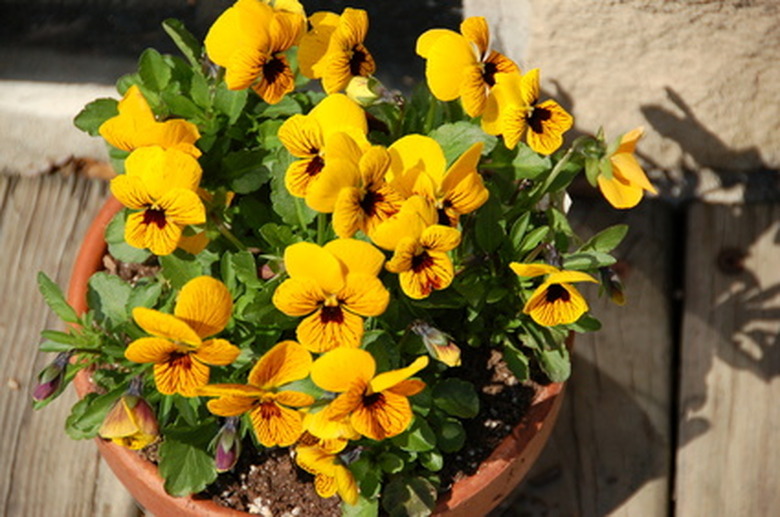How To Grow Pansies In Virginia
Things Needed
- Spade or hand trowel
- Compost
- Pansy seedlings
- Water
- Mulch
- Fertilizer
Pansies are a cold-hardy annual that can be found in nurseries in the early spring and the fall. With bright bloom "faces" in hues of yellow, blue, white and mixtures of those colors, pansies instantly add color to any garden or container. Pansies are one of the simplest flowers to grow, as they need only a regular watering and an occasional feeding. In Virginia's USDA growing zone 7, pansies may continue to flourish into the coldest months while the northernmost section in zone 6 will probably see pansies die off in early winter. Pansies are a self-seeding annual, so grow them only in areas where you are comfortable with them popping back up year after year.
Step 1
Loosen the dirt in your garden bed with a spade, turning the dirt until it is a loose, powdery consistency. Now would be a good time to collect a sample to take for testing at your local cooperative extension office, or, if you've already gotten your results, now would be the time to add any amendments suggested such as compost or manure.
- Pansies are a cold-hardy annual that can be found in nurseries in the early spring and the fall.
- Pansies are a self-seeding annual, so grow them only in areas where you are comfortable with them popping back up year after year.
Step 2
Dig individual holes to plant your pansy seedlings, spacing them six to ten inches apart or as suggested on your particular cultivar's packaging. Be sure that pansies have at least six hours of sun a day for best results.
Step 3
Drop a granular slow-release fertilizer, if desired, into the planting holes. Pansies are voracious feeders, and the more nutrients they receive the bigger and brighter they grow.
Step 4
Water well after planting. Like most annuals, pansies have shallow root bases and will need regular watering. Water daily in warmer times of the year.
- Dig individual holes to plant your pansy seedlings, spacing them six to ten inches apart or as suggested on your particular cultivar's packaging.
- Be sure that pansies have at least six hours of sun a day for best results.
Tip
Pansies are simple to care for, as there is no deadheading or pruning needed. In the southern most sections of Virginia (zone 7b), pansies may not survive the heat of the summer months but should re-seed and return in fall. In the rest of the state, pansies should be a three-season bloomer. Yellowing leaves are a sign of nitrogen shortage in your soil. Fertilizing should take care of that. Pansies can be stuffed tightly into a container for a full, cascading look. Remember that plants planted tightly together are fighting for nutrients and water, so feed and water them on a more regular schedule than those planted in garden beds.
Warning
Pansies are relatively disease and pest free. Slugs, aphids and spider mites all may chomp on them though. Treat the garden bed immediately with an organic or chemical pesticide if any signs of these pests are prevalent.



